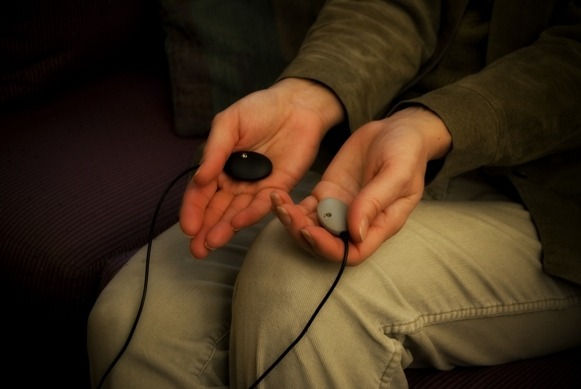What is the Difference Between Grief and Trauma? How to Separate Them and Why It Matters
- Caroline Watson Kobylinski

- Jul 31
- 4 min read
Updated: Jul 31
Untangling Grief and Trauma: Why It’s So Hard (and So Important)
If you’ve ever lost someone or lived through something that left you shaken to your core, you know how tangled grief and trauma can feel. For months after my sister-in-law, Jenny, died, I couldn’t tell where one ended and the other began.
I’d cry when I saw her dog’s food bowl (grief), but I’d also jolt awake at 2 a.m., heart pounding, my body reliving the nights I sat listening for her breathing (trauma). At first, I didn’t have the words for it—I just knew I was exhausted, raw, and stuck in this loop of heartache and hypervigilance.
This is why separating grief from trauma matters: they often overlap, but they heal differently.
What Is Trauma?
Trauma happens when your nervous system gets overwhelmed by something you couldn’t stop or escape. It’s less about the event itself and more about how it gets stored in your brain and body.
For me, trauma came from caregiving. I still remember the summer of 2023, after Jenny’s cancer had already metastasized to her lungs. We spent so much time in the ICU that I lost count of the visits. There were multiple nights I thought we were saying our final goodbyes. Those moments imprinted themselves on me. Even months after she passed, as soon as the sun went down, my body braced itself—waiting for the next crisis that wasn’t coming.
Types of Trauma:
Acute trauma: A single overwhelming event (like a car accident or sudden illness).
Chronic trauma: Repeated exposure over time (like living through ongoing medical emergencies).
Complex trauma: Multiple layers of trauma, often rooted in long-term or early life experiences.
How Trauma Shows Up:
Feeling “on guard” all the time (hypervigilance).
Flashbacks or vivid, intrusive images.
Insomnia or restless, fearful sleep.
Emotional numbness or feeling detached just to survive.
With therapy tools like EMDR and Accelerated Resolution Therapy (ART), I was able to process those nights—the alarms, the fear, the images I couldn’t unsee. Trauma needs this kind of nervous system work to truly heal.
What Is Grief?
Grief is different. It’s the hollow ache left behind when someone or something deeply meaningful is gone. It’s not about danger—it’s about absence.
For me, grief showed up when we returned to Gulf Shores this summer—the same beach where we’d taken Jenny the year before for what we all knew would be her last vacation. Standing there without her felt like someone knocked the wind out of me. That’s grief.
How Grief Shows Up:
It comes in waves—one moment you’re okay, the next you’re sobbing in the car.
It feels physical—heaviness in your chest, a lump in your throat, bone-deep exhaustion.
It’s unpredictable—triggered by smells, songs, or casual comments.
It’s not “wrong”—grief is the flip side of love.
Grief doesn’t disappear. Instead, we learn to live with it. Our lives expand around it, making more room for joy and hope without erasing the loss.
How Trauma and Grief Get Twisted Together
Here’s where it gets tricky: trauma and grief often intertwine. After Jenny died, I assumed my insomnia was grief. But in therapy, I realized it was trauma—my brain had linked nighttime with those terrifying nights in the ICU and at home, waiting for her breathing to change.
Why this distinction matters:
Trauma needs targeted treatment—like EMDR or ART—to help your nervous system reprocess and release those moments.
Grief needs compassion, rituals, and space to honor the loss and carry the love forward.
When you treat one like the other, you risk staying stuck—either waiting for grief to “go away” (it won’t) or hoping trauma will heal with time (it won’t without intervention).
How to Tell If It’s Grief or Trauma
It’s normal for grief and trauma to overlap, but here are some clues that can help you tell them apart:
Signs it’s likely grief:
You feel waves of sadness tied to memories or milestones.
You long for the person or thing you’ve lost.
The pain feels more about absence than fear.
Signs it’s likely trauma:
You relive specific moments (images, sounds, sensations) as if they’re happening now.
Your body reacts automatically (heart racing, trouble breathing) even in safe situations.
You feel on edge, hyper-alert, or have trouble sleeping because you’re “waiting for the next crisis.”
Both can be true at once.You may grieve the loss while also carrying trauma from what you lived through. The good news? Trauma can be resolved, and your capacity to hold grief can grow.
Why This Matters for Healing
Grief doesn’t get smaller—you grow bigger around it. Trauma, however, can be resolved. EMDR and ART helped me finally sleep through the night, release the hospital images seared in my memory, and stop bracing for crises that weren’t coming.
If you’re navigating both, therapy can help you:
Untangle what’s grief and what’s trauma
Heal your nervous system with tools like EMDR or ART
Build grief rituals that keep your loved one’s memory alive
Carry your loss without feeling swallowed by it
Therapy for Grief and Trauma in Florida, Texas, Alabama, Colorado, and Louisiana
At CWK Counseling, I work with clients who are carrying deep grief, unresolved trauma, or both. Using a grounded, compassionate approach, I help clients process the trauma stored in their bodies while holding space for the grief that remains.
We offer secure online therapy across Florida, Texas, Alabama, Colorado, and Louisiana, so you can access support wherever you are.
Ready to begin untangling grief and trauma?
Contact CWK Counseling today to schedule a consultation. Healing doesn’t erase your love or memories—it helps you carry them without feeling crushed.
📞 Call or text: 903.701.0525
📲 Follow on Instagram: @bruisedbananacounseling



Comments